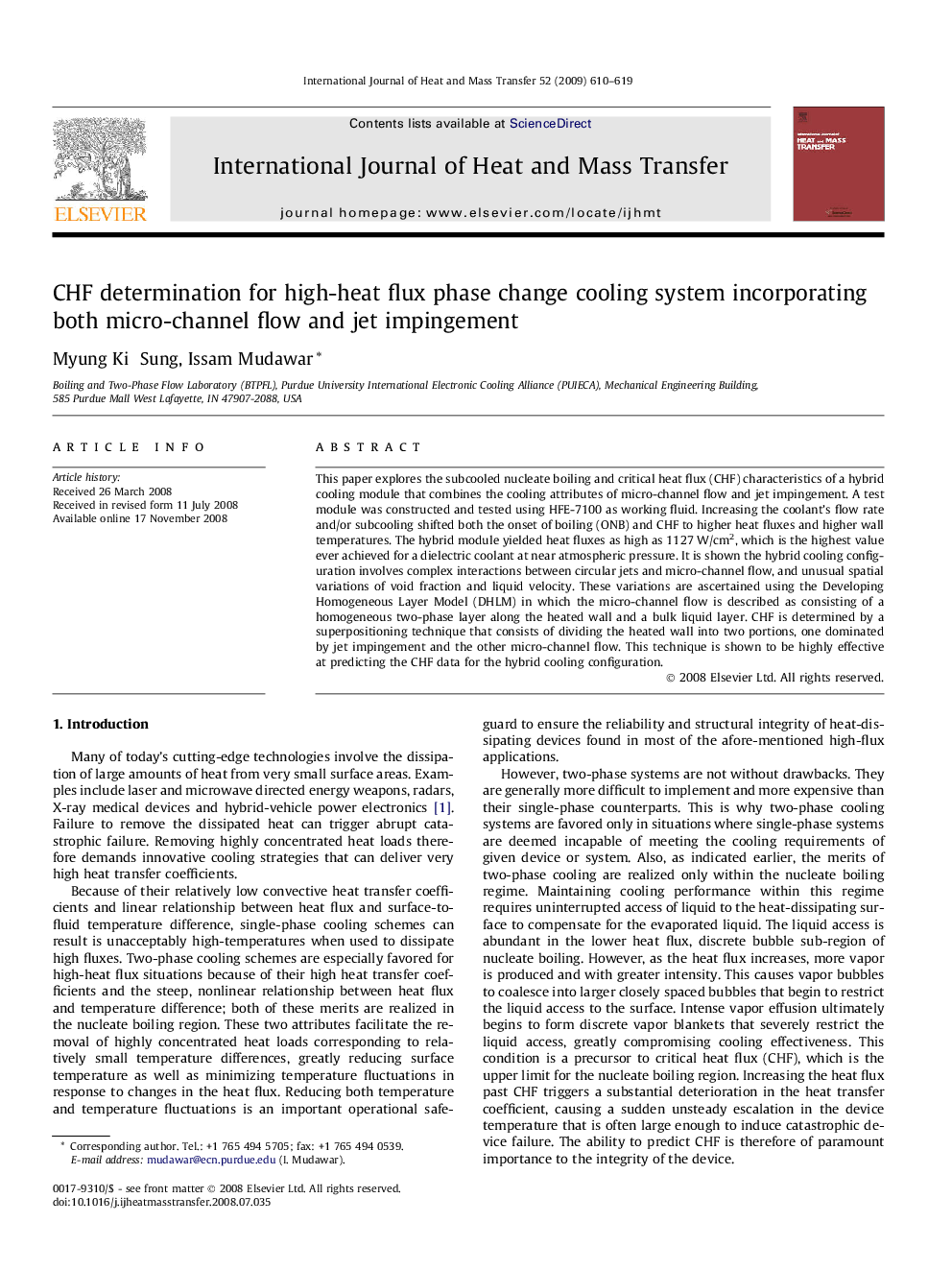| Article ID | Journal | Published Year | Pages | File Type |
|---|---|---|---|---|
| 660597 | International Journal of Heat and Mass Transfer | 2009 | 10 Pages |
This paper explores the subcooled nucleate boiling and critical heat flux (CHF) characteristics of a hybrid cooling module that combines the cooling attributes of micro-channel flow and jet impingement. A test module was constructed and tested using HFE-7100 as working fluid. Increasing the coolant’s flow rate and/or subcooling shifted both the onset of boiling (ONB) and CHF to higher heat fluxes and higher wall temperatures. The hybrid module yielded heat fluxes as high as 1127 W/cm2, which is the highest value ever achieved for a dielectric coolant at near atmospheric pressure. It is shown the hybrid cooling configuration involves complex interactions between circular jets and micro-channel flow, and unusual spatial variations of void fraction and liquid velocity. These variations are ascertained using the Developing Homogeneous Layer Model (DHLM) in which the micro-channel flow is described as consisting of a homogeneous two-phase layer along the heated wall and a bulk liquid layer. CHF is determined by a superpositioning technique that consists of dividing the heated wall into two portions, one dominated by jet impingement and the other micro-channel flow. This technique is shown to be highly effective at predicting the CHF data for the hybrid cooling configuration.
